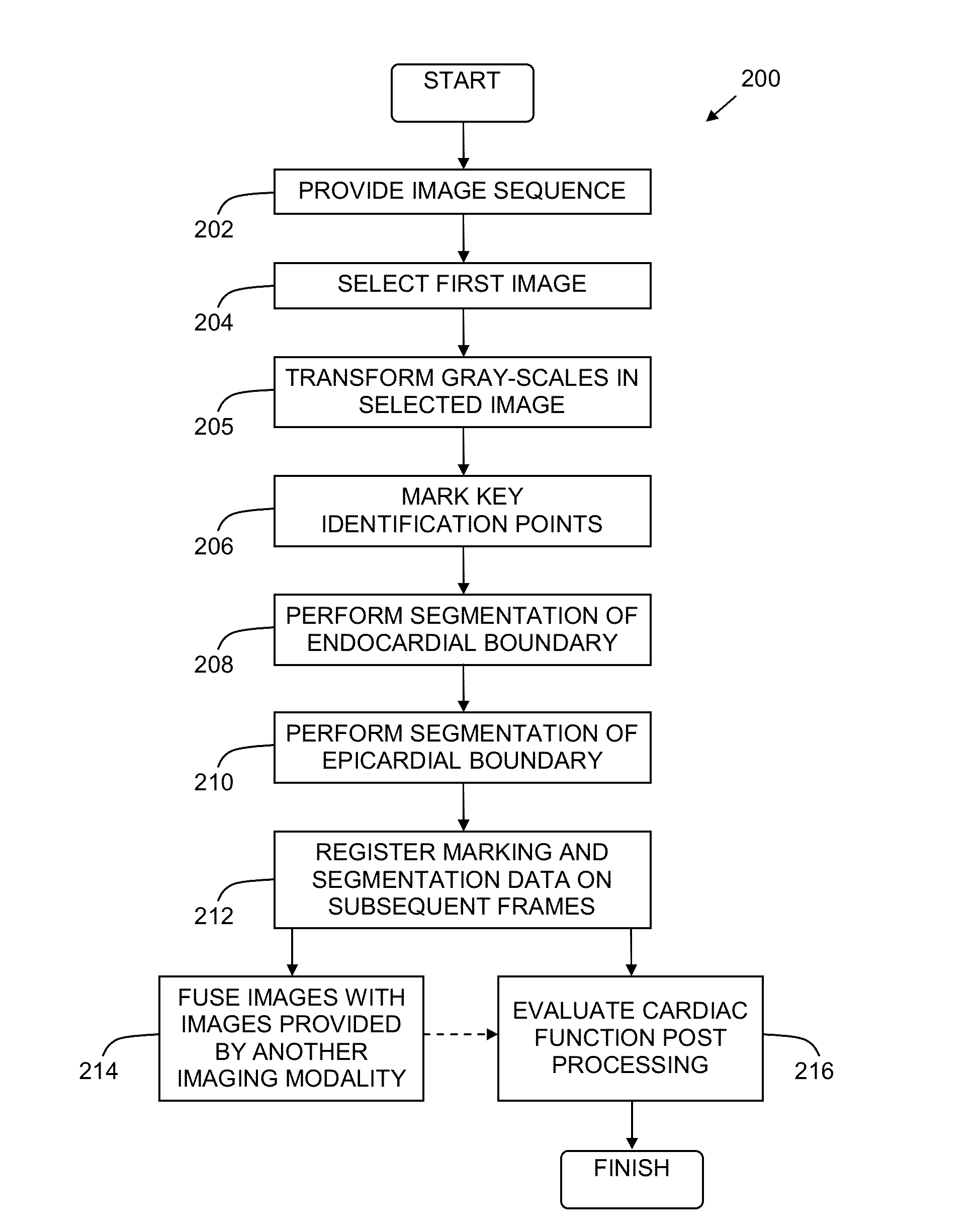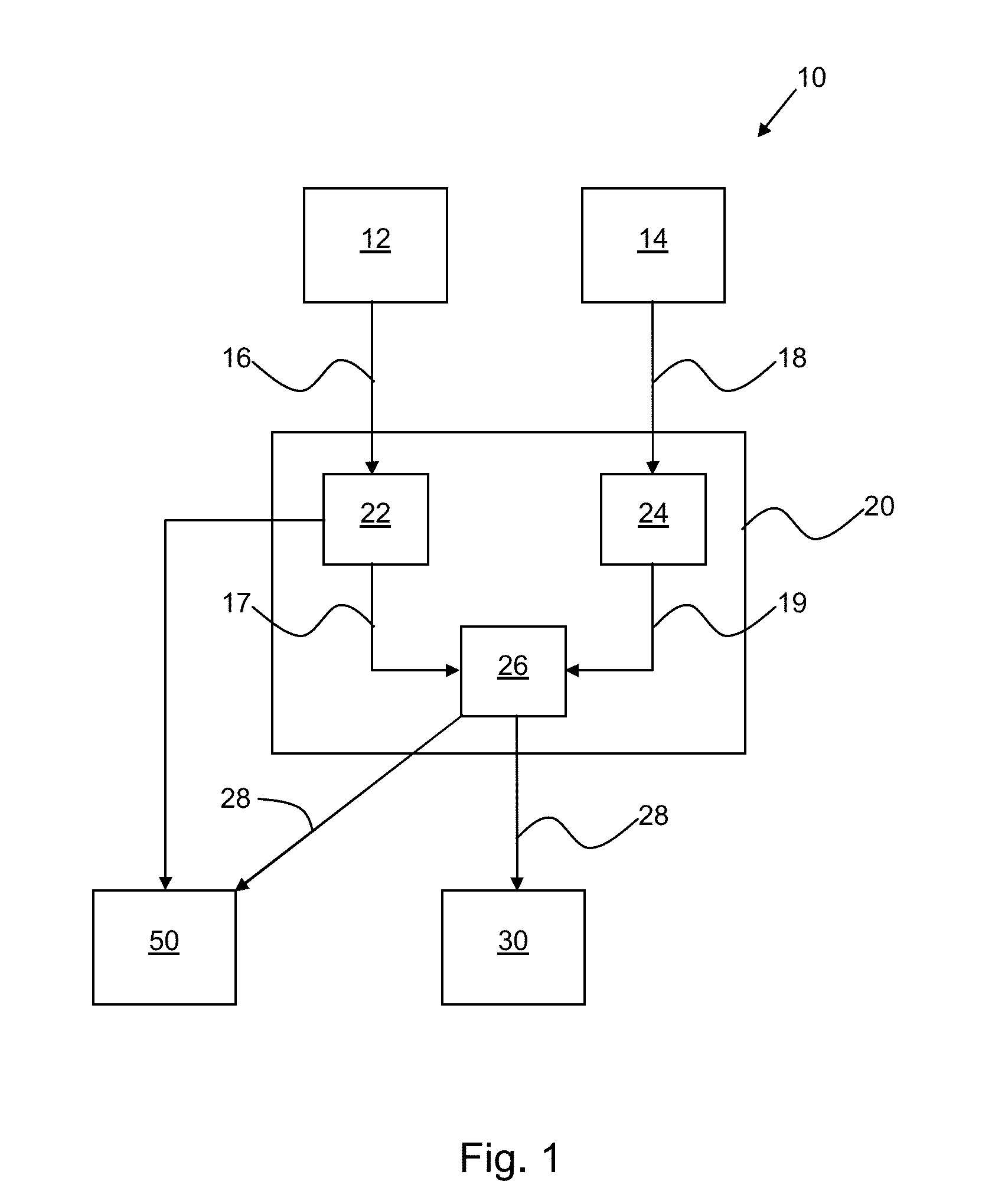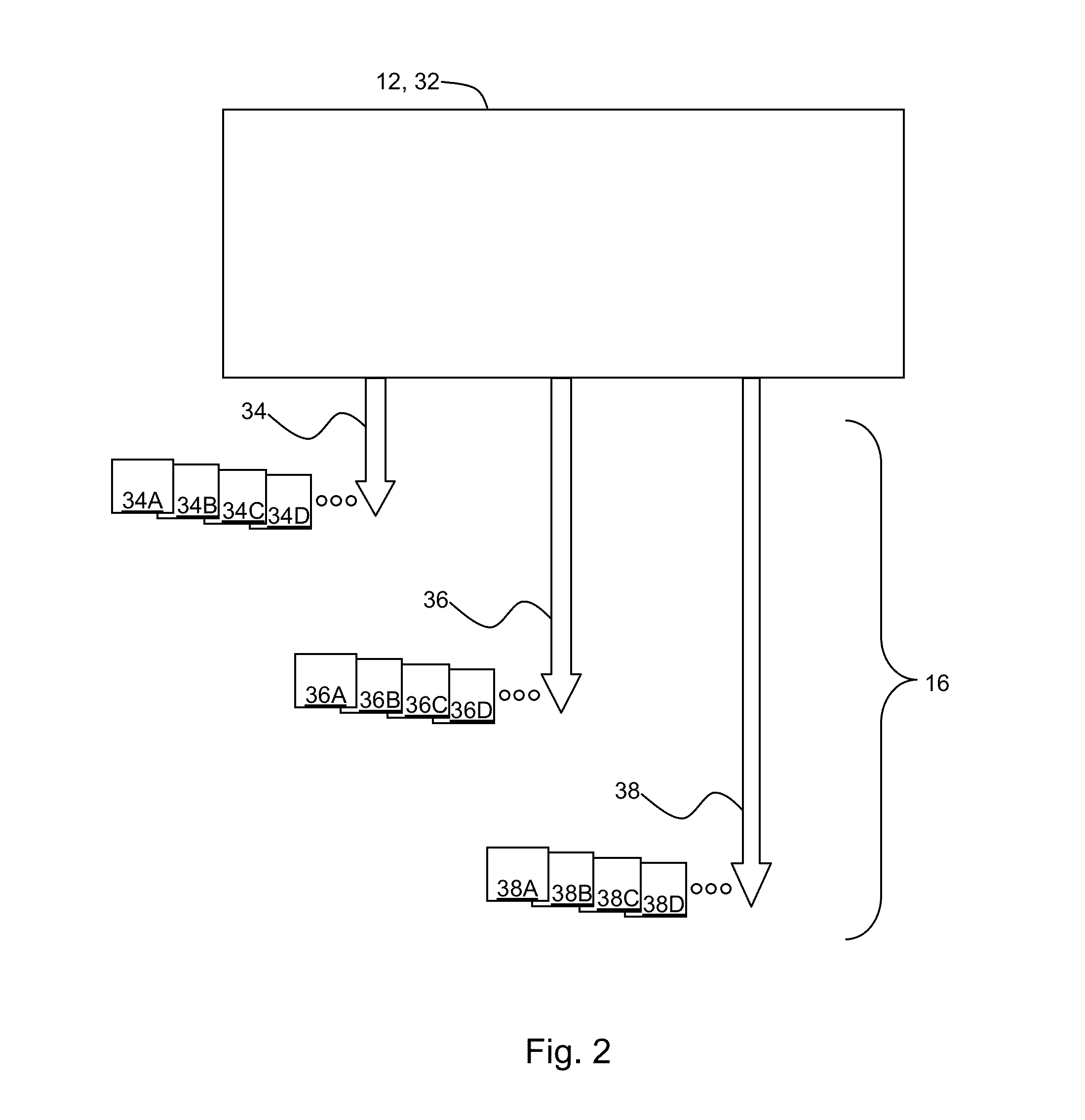System and Method for Measurement of Myocardial Mechanical Function
- Summary
- Abstract
- Description
- Claims
- Application Information
AI Technical Summary
Benefits of technology
Problems solved by technology
Method used
Image
Examples
example 1
Automatic Segmentation of Cardiac MRI Cines for Long Axis Views
[0074]Validation of a method of segmentation of the endocardium and epicardium in 2CH and 4CH views was performed. The method was validated on a clinical dataset by comparing its results to manual segmentation performed by experienced observers, which serves a gold-standard.
[0075]Method: Cardiac MRI Datasets: Data were obtained at two orthogonal cross-sections per phase, 2CH and 4CH. Each data sequence was acquired as 2D+time apical cine slice using ECG gated cine cMRI. The data consisted of clinical exams of 126 patients with suspected cardiac disease. The datasets were obtained from two sources: 26 patients were obtained from the Oslo University Hospital, Rikshospitalet, Oslo, Norway and dataset of 100 patients were obtained from the cohort. These data were randomly selected from the Cardiac Atlas Project (CAP) database. All images were acquired using the steady state free precession protocol (SSFP) and 1.5 Tesla MRI s...
example 2
Myocardial Strain Assessment by Cine Cardiac Magnetic Resonance Imaging Using Non-Rigid Registration
[0102]Validation of a Tool for assessment of longitudinal strain in standard CMR sequences was performed. The method was validated with TMRI and compared to speckle tracking echocardiography (STE) and to the extent of scar tissue.
[0103]Methods: A total of 67 individuals were included in this study. The validation group consisted of 15 patients with previously diagnosed myocardial infarction (mean age 69±12 years, 14 males) and 15 healthy volunteers without clinical history of cardiac disease (mean age 27±5 years, 12 males). All these subjects underwent CMR and TMRI for reference strain analysis (two sources: Cardiac Atlas Project, STACOM 2011 challenge and The University of Queensaland, Brinsbane, Australia). The second group was used for the comparison stage of the study. This group included 37 patients (mean age 67±14 years, 28 males), with previously diagnosed myocardial infarction...
PUM
 Login to View More
Login to View More Abstract
Description
Claims
Application Information
 Login to View More
Login to View More - R&D
- Intellectual Property
- Life Sciences
- Materials
- Tech Scout
- Unparalleled Data Quality
- Higher Quality Content
- 60% Fewer Hallucinations
Browse by: Latest US Patents, China's latest patents, Technical Efficacy Thesaurus, Application Domain, Technology Topic, Popular Technical Reports.
© 2025 PatSnap. All rights reserved.Legal|Privacy policy|Modern Slavery Act Transparency Statement|Sitemap|About US| Contact US: help@patsnap.com



